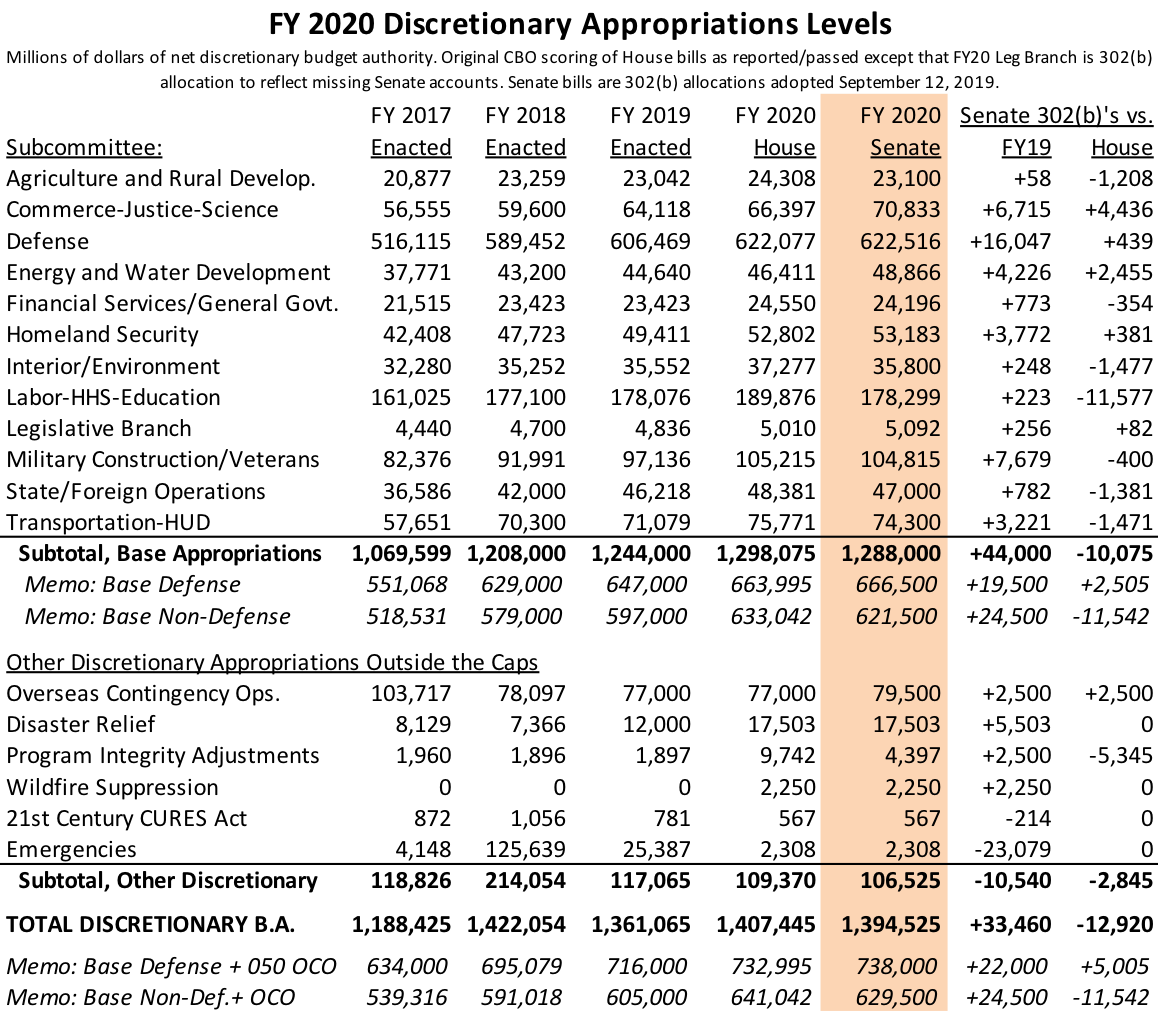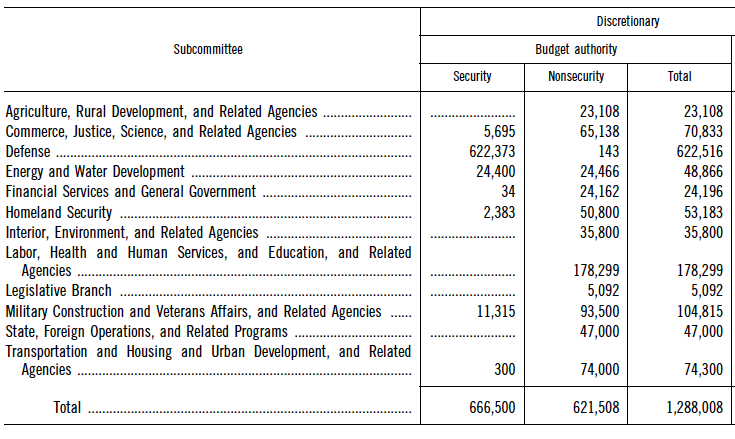Today, the Senate Appropriations Committee approved a plan to split $1.3 trillion in discretionary spending for fiscal year 2020 amongst its twelve subcommittees, each of which will now try to produce a spending bill. The vote was party-line because Democrats objected to how the plan holds down funding for the Labor-HHS-Education Subcommittee and instead puts an awful lot of funding towards the Homeland Security Subcommittee, which they suspect will go towards U.S.-Mexico border wall construction.
The Senate plan gives the Transportation-HUD Subcommittee a net discretionary budget authority allocation for FY20 of $74.3 billion, almost $1.5 billion less than the total in the bill passed by the House of Representatives. The Senate total still appears to be a $3.2 billion increase over the FY 2019 enacted total, but it’s not that simple.
Budget allocations are net totals, and the Department of Housing and Urban Development has an unusually large amount of offsetting receipts beneath the surface that vary from year to year. The appropriators are forced to rely on the Congressional Budget Office estimate of upcoming year receipts, and while those receipts offset $9.6 billion in HUD appropriations in the 2019 Act, CBO predicts them to drop to $7.4 billion in FY 2020.
If one backs out all of the offsets from the FY 2019 THUD act, the gross total funding was $80.8 billion, and the comparable starting total for the Senate’s FY 2020 bill is $81.9 billion, meaning that the real increase in funding under the Senate plan is a little less than $1.1 billion, as shown below.

The Transportation-HUD bill for 2020 is scheduled to be marked up in Senate subcommittee on Tuesday, September 17 and in full committee on Thursday, September 19.
The overall plan adopted by the Senate, shown below, favors the Energy and Water Development Subcommittee ($2.5 billion more than the House). And the Commerce-Justice-Science Subcommittee in the Senate plan gets $4.4 billion more than the House plan, but this is probably a technicality. There are a number of types of discretionary appropriation that don’t count towards the spending caps, and this year, House Democrats tried to create another one for the 2020 Census – a one-time cap work-around of $7.5 billion, which was included in the Commerce-Justice-Science bill that passed the House.
Afterwards, the Bipartisan Budget Act of 2019 did create a one-time cap work-around for the Census – but only in the amount of $2.5 billion, not the House’s $7.5 billion. So the Senate allocation being $4.4 billion higher than the House allocation really means that the Senate’s bill is $0.6 billion lower than the House, once you count that extra $5 billion in the House bill that the House did not count towards the spending caps.
Before adopting the plan recommended by Appropriations chairman Richard Shelby (R-AL) by a party-line roll call vote, the panel first rejected an alternative plan offered by ranking minority member Patrick Leahy (D-VT). That plan would have cut Homeland Security by $3.6 billion and given most of that back to Labor-HHS-Education as a $3.1 billion increase (all versus the Shelby plan). Leahy would also have reduced Energy and Water Development’s allocation by $2.1 billion and beefed up other subcommittees, including Transportation-HUD (+$1.078 billion), Military Construction & Veterans (+$426 million), and Interior/Environment (+$200 million).
The table below goes back to the 2017 enacted bills so readers can get a sense of just how much spending grew in 2018-2019.

(Note: The number for the House-passed Homeland Security bill is taken from the most recent CBO status table available as of this writing, which is the table as of July 24. That $52.802 billion, per CBO, includes $3.066 billion as the cost of a policy amendment offered by Rep. David Price (D-NC) in markup that prevents the Trump Administration from enforcing a new immigration rule. Since then, CBO on September 10 lowered their estimate of the one-year cost of the Price amendment to a rounded $1.9 billion, but CBO has not yet updated the appropriations table (rounded to the million). So the above estimate of the House Homeland bill will, at some point, be reduced by CBO by somewhere in the ballpark of $1.2 billion.)
September 13 addendum – the formal report containing the allocations was filed by the committee shortly after the markup and is now online with GPO. It shows each subcommittee’s allocation breakdown into the defense and non-defense categories. (The House Appropriations Committee does not break down allocations publicly.) For transportation, this indicates that the Maritime Administration’s security account (the only USDOT account in the defense budget function) will once again receive $300 million in 2020. It also indicates that the nuclear weapons portion of the Energy and Water bill will total $24.4 billion of that subcommittee’s $48.9 billion allocation, that the FBI salaries in the Commerce-Justice-State bill will total $5.7 billion, that the Military Construction part of the Military Construction and Veterans Affairs bill will total $111.3 billion, and that the various defense account in the Homeland Security bill (which include a portion of Coast Guard operations) will total $2.3 billion.







